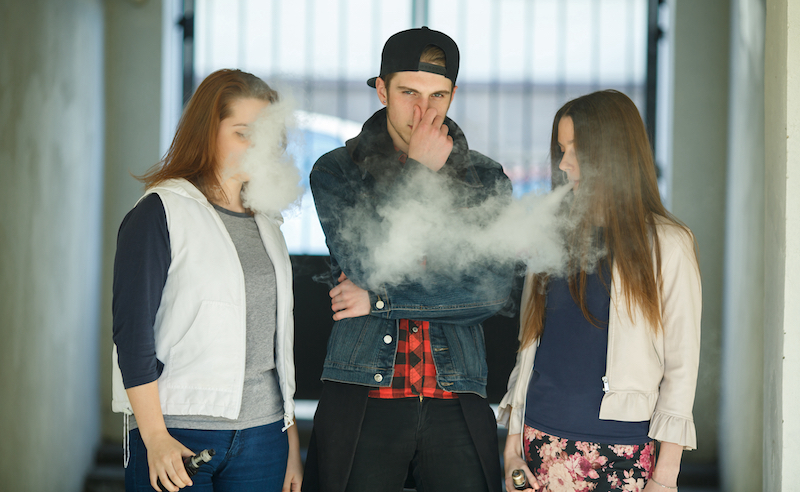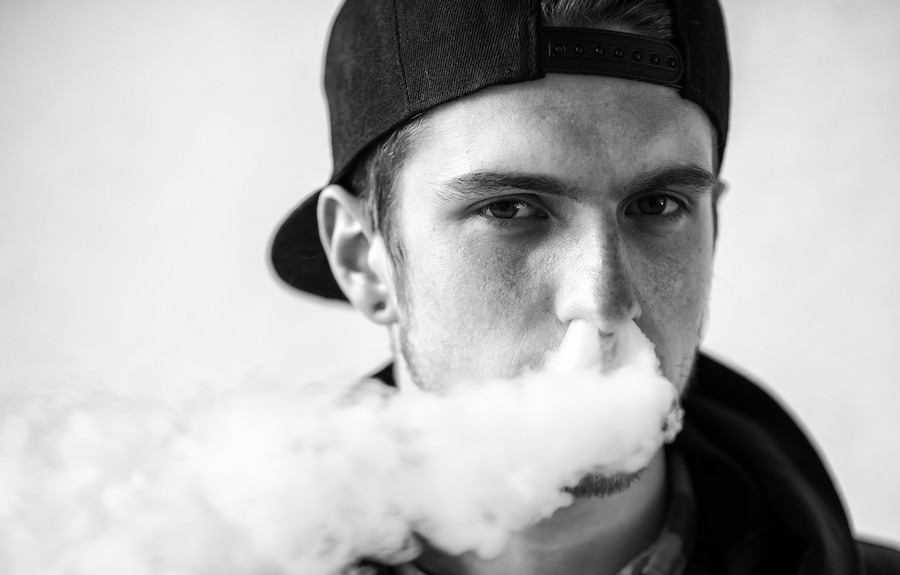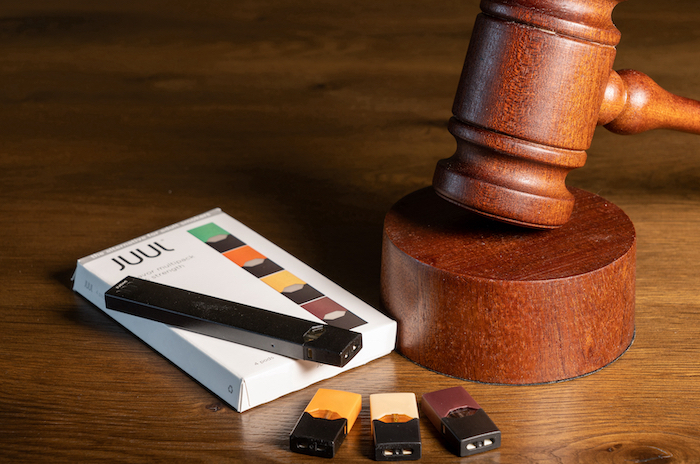Research reveals “permissive” inspections and lenient standards for violators that do little to curb the youth vaping crisis
By Jennifer Taylor
When a teenager we’ll call “J” entered the first day of an eight-week diversionary vaping cessation program at Jonesboro High School in suburban Atlanta, he came in “mad at the world.” He was required to attend the one-hour after-school sessions because he had violated Jonesboro’s no-vaping policy, a program instituted when the school district, along with others in the Atlanta area, witnessed an explosion of youth vaping. What wasn’t known during that one-hour after-school session was where or how “J,” a senior at the school with 1,388 in the study body, obtained his nicotine and marijuana.
But it was clear to facilitator Tara Schuster of the nicotine cessation program Project CONNECT that her job—to get through to teens about the benefits of being nicotine-free—wasn’t going to be easy in a town where vaping shops are plentiful. “There’s literally one every half a mile,” Schuster says.
“I tried to break down the walls that first session,” she recalls of her time with “J” in 2018 and ’19. “And it just wasn’t happening.” Instead, she watched him sit in silence that entire first hour.
The decades-long decline in youth tobacco use has reversed, researchers say. They pinpoint the resurgence to the introduction in the mid-2000s of e-cigarettes as “nicotine cessation” tools.
Schuster isn’t alone in her mission to protect young people from the dangers of nicotine. In the more than three years since the U.S. Surgeon General and the Food and Drug Administration (FDA) first described youth vaping as an epidemic, the decades-long decline in youth tobacco use has reversed, researchers say. They pinpoint the resurgence to the introduction in the mid-2000s of e-cigarettes as “nicotine cessation” tools.
For teens and young adults, there has been no escaping the prevalence of vaping in recent years. Like the clean scent of a dryer sheet on freshly tumbled clothes, a sweet-smelling cloud of e-cigarettes wafted in the air of school bathrooms, hallways and classrooms at the peak of the vaping epidemic in late 2017. And the effect lingers: Vaping has been potent enough to follow many teens out of adolescence straight into early adulthood. E-cigarettes contain highly concentrated nicotine, making them powerfully addictive—in stark contrast to the tobacco industry’s cessation claims. Ingredients inhaled from e-cigarettes have led to thousands of hospitalizations and have even been blamed for dozens of deaths.
With the tobacco industry tightening its grip around a new generation of young people, and parents and officials sounding the alarm, the federal government announced in 2018 that it was taking action. In April of that year, the FDA—the agency that regulates tobacco products in the U.S.—promised a massive nationwide undercover enforcement “blitz” to crack down on the illegal sale of e-cigarettes to minors, specifically calling out Juul, which at the time was the largest e-cigarette manufacturer in the U.S. The FDA made public 40 warning letters issued that month to retailers for violating the ban on selling e-cigarettes to minors, as part of its Tobacco Retailer Compliance Check Inspection Program, and signified that many more such actions would be on the way.
Scott Gottlieb, the FDA commissioner at the time, issued a warning to retailers about e-cigarettes. “Let me be clear to retailers,” Gottlieb said. “This blitz, and resulting actions, should serve as notice that we will not tolerate the sale of any tobacco products to youth.”
An Agency Falling Short
But researchers at the Public Health Law Center (PHLC) in St. Paul, Minn., weren’t buying the tough talk. Instead, they embarked on their own study of the FDA’s tobacco enforcement program, concluding that the agency is falling short of leveraging its authority to stop repeat retail violators. The FDA, the study said, is “neither assessing penalties in a timely fashion nor escalating penalties to the fullest extent of the law.”
“[The FDA] has a lot of great talking points of all the things they think they have done,” says Natalie Hemmerich, JD, MPH, the center’s lead senior staff attorney for California Technical Assistance and the lead author of the study. “We wouldn’t consider it to be hardly anything that’s significantly impacted anything.”

Failures in the FDA’s inspection program were apparent not just to those researchers. In 2021, the Department of Health and Human Services’ Office of Inspector General (OIG) launched an investigation into the program, including assessing the nature of inspections, violations and enforcement actions. The OIG’s scope also includes assessing the FDA’s direction and oversight of the program, how it targets inspection priorities and how it holds inspection contractors accountable. The findings are expected to be released later this year.
An FDA spokesperson indicated to TreatmentMagazine.com that the agency is familiar with the Public Health Law Center study and “is reviewing the findings of the paper.” The spokesperson also noted that the agency is fully cooperating with the inspector general review and “welcomes the opportunity to provide clarity regarding the FDA’s Tobacco Retailer Compliance Check Inspection program.”
Inconsistent, Lenient Enforcement
Hemmerich and her team analyzed more than half a million FDA inspection records, involving nearly a quarter-million individual retailers, over a period of three and a half years.
Here’s what they found: Among the repeat offenders that could have been issued a No-Tobacco-Sale Order (NTSO), which would ban them from selling tobacco for a period of time, less than 2% received one. And under the researchers’ interpretation of federal law, among the repeat violators that did eventually receive an NTSO, nearly all of them could have been issued the order far earlier than they were—an average of a year and three months earlier, in fact.
The study illustrated precisely what researchers had suspected before their analysis, says Desmond Jenson, PHLC lead senior staff attorney for federal legislation. “We talked to a lot of people at the state and local levels,” Jenson says. “And they were like, ‘Every store is still selling these. Nothing has changed as a result of this historic enforcement effort.’ So we went into the enforcement data and tried to suss it out.”
The FDA works with private contractors and state agencies throughout the U.S. to conduct controlled buys, which often involve hiring minors to enter stores and attempt to purchase tobacco products, according to the study.
In a 2018 University of Michigan survey of 10th graders, 66% said it would be “easy or very easy” to obtain a vaping device.
The compliance program works like this: First-time offending retailers receive a warning letter. Subsequent violations trigger a system of civil monetary penalties and, potentially, no-tobacco-sales orders. Escalating fines can be issued to retailers that have repeatedly violated the law over 36 months. An NTSO is typically issued when retailers commit flagrant, repeated violations. The length of time a retailer is shut down by the NTSO is determined on a case-by-case basis by an administrative law judge. Violations for which retailers can be charged include selling tobacco to a minor, failing to verify ID for tobacco sale and being a repeat violator.
In a 2018 University of Michigan survey of 10th graders, 66% said it would be “easy or very easy” to obtain a vaping device. Other studies have found that teens can easily obtain vaping devices through their peers and note that these “social sources” are often underage buyers themselves.
The Public Health Law Center study sought to answer the following questions:
- Is the FDA diligently calculating penalties using its own counting methods?
- Is the FDA identifying the proportion of NTSOs that would have been issued earlier if it counted the violations as stringently as the Tobacco Control Act allows?
- Is the FDA identifying the proportion of “frequently violating retailers” that could have received an NTSO but did not?
The study showed that the researchers’ interpretation of the law differed dramatically from that of the FDA, especially regarding when NTSOs should be issued during compliance inspections. According to the law, retailers are subject to NTSOs when they have committed five repeat violations of particular requirements at a particular retail outlet over a 36-month period. But the FDA counts violations differently than do the researchers, who interpreted the law more strictly.
Researchers say that in the most stringent sense, “repeat violations” would mean any five violations within a 36-month period at any one outlet. The FDA’s interpretation appears to be more lenient, the study says.
“The disparities between the number of violations and types of violations … everything was all over the map,” Jenson says. “The amount of strange anomalies that we couldn’t explain made us dig a little deeper.”
The FDA’s enforcement actions, according to the study, indicate that the FDA interprets the statute to mean:
- Five violations of requirements issued under section 906(d) of the Tobacco Control Act at a particular retailer
- Each of the five violations represents the second or subsequent violation of a particular requirement
- Each of the five violations occurs within 36 months
According to the researchers, that means that for each violation category—sale to a minor, or failure to check an ID—the retailer gets a free pass on the first violation. To accumulate repeated violations, the study says, there must be a sum of five violations that are at least the second violation in each category. Therefore, for instance, three inspections that resulted in three sales to minors and two failures to check an ID would be only three violations under the FDA’s counting system, according to the study.
Overall, researchers noted that less than 2% of the frequent, repeat violators that could have been issued an NTSO actually got one. That means stores risk very little federal action when minors buy vaping products. The FDA’s counting method, Hemmerich says, “seems to defy logic.”
When it came to assessing NTSOs, Hemmerich noticed more disparity in how violations were being counted. Under the FDA’s interpretation of the statute, the agency issued NTSOs to fifth-time offenders 93.4% of the time. But under the researchers’ more stringent interpretation of the statute, the exact opposite was found—94.7% of fifth-time offenders were not issued NTSOs.
Overall, researchers noted that less than 2% of the frequent, repeat violators that could have been issued an NTSO actually got one. That means stores risk very little federal action when minors buy vaping products.
The FDA’s counting method, Hemmerich says, “seems to defy logic.”
And that led the study to conclude: “The FDA is largely following its own more lenient interpretation of the statute. Had the FDA interpreted and applied the statute more stringently, the FDA would have already issued NTSOs to nearly three-quarters of retailers who repeatedly violated the Tobacco Control Act.”
That failure, the researchers say, “has weakened efforts to curb the youth e-cigarette epidemic.”
E-cigarettes Leave a Trail of Harm
Vape devices have evolved since Schuster started with Project CONNECT, created by Pennsylvania-based Caron Treatment Centers in 2006. Initially they looked like cigarettes—small, round devices that were smoked. Then came big-box cartridges. And eventually they mimicked everyday items such as a USB drive or a colorful pod with liquid that could be squeezed into water for flavoring. But no matter the shape or form, young people could identify the devices. “What we were seeing was a huge curiosity [from teens],” Schuster says. “And if the popular kid at school is doing it, [others] want to try it.”
Other organizations are tracking just how closely tobacco retailers are setting up shop near schools. In Atlanta, for example, 42% of public schools are within 1,000 feet of a tobacco retailer, according to a 2020 report by The ASPiRE Center, a National Cancer Institute-funded collaborative of tobacco control researchers, practitioners and legal experts. Atlanta has 738 tobacco retailers, far more than the number of McDonald’s and Starbucks combined.
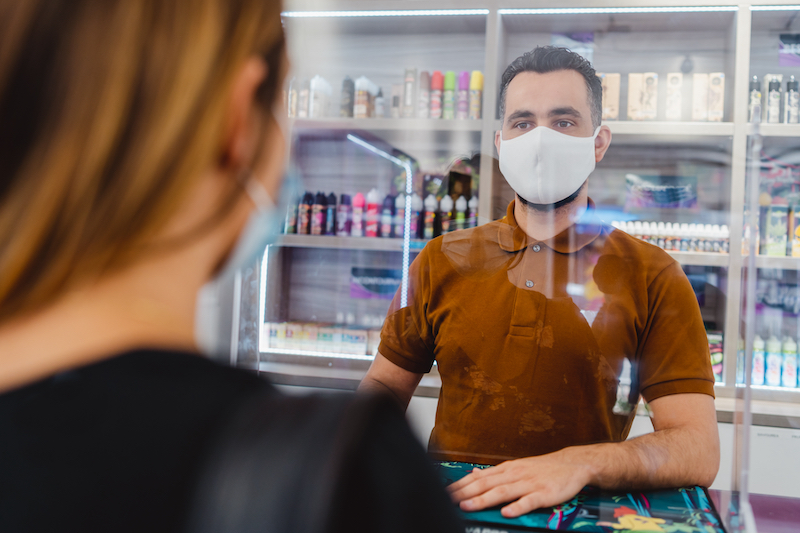
In the Jonesboro High zip code, the FDA has completed 150 compliance inspections at tobacco retailers, dating back nearly 10 years. From those, seven warning letters were issued. In 2021, a total of 21 compliance checks were conducted in this zip code, resulting in one warning letter issued to a Family Dollar store for an illegal sale to a minor—but not for the failure to verify the purchaser’s age.
Teens in Schuster’s cessation program have talked openly about the ease with which they purchase products at shops. In casual conversation, she says, they chit-chat about running into peers at smoke shops over the weekends. “The owners who run [the shops] tend to be a little oblivious,” she notes.
In Hellertown, Pa., 18-year-old Jaivon David is attending the Project CONNECT program at Saucon Valley High after violating its no-vaping policy earlier this year. (The alternative was a $250 fine.) David says he was first exposed to vaping by a friend in 10th grade, and that the habit affected his breathing and the way he ran, and even caused random heart palpitations. He says another friend was hospitalized from vaping.
Before quitting vaping cold turkey upon the start of the cessation program, David says he and a girlfriend would go to any corner store, and often retailers wouldn’t hesitate to sell them e-cigarettes. The teens also had connections—friends who were hired at convenience stores and even a local cigarette outlet—who sold the products to minors. “It’s really sad how easy it is” to get e-cigarettes, he says.
He also describes the intense peer pressure to vape inside the school that he and others experienced. Once, David says he witnessed a student in the bathroom trying to sell another student a vape. “I don’t want it,” David remembers the student saying. In response, the other student said he could have it for free.
“And the kid took it,” he says.
David recounts his own pressure-filled confrontation with a friend who was badgering him about why he wasn’t vaping, why he wasn’t buying nicotine from him and why he wasn’t hanging around him anymore.
“You guys just aren’t the best group to be around,” he recalls saying. David is more than halfway through the cessation program. He says his heart is feeling better and his thinking is clearer. And notably, he says, “I don’t feel like I need to depend on something.”
Other teens have been spurred into action after witnessing their peers become addicted to tobacco through vaping. In 2019, Kamal Mazhar, president of the nonprofit Teens Against Vaping, implored members of Congress to help quell the epidemic. In a letter to the House Committee on Oversight and Reform, he described the lengths his peers would go to maintain their vaping habit, including high school passing periods that became a mad dash to restrooms to vape in the stalls. Other students recounted to Mazhar that they weren’t able to sit for a full class hour without needing to run to the restroom to vape. The nicotine addiction, he noted, also caused peers to fail advanced placement exams and college standardized tests because they couldn’t concentrate and struggled to sit through the full length of the exams.
The dangers escalate from there, often exacerbated by flavored products like mango, creme and cucumber. Vaping can suppress a teen’s appetite, Mazhar said. “Juul has become a substitute for eating dessert or even entire meals,” he wrote. “The flavor satisfies their cravings and the nicotine limits their hunger.”
The Centers for Disease Control and Prevention (CDC) warns that nicotine can be especially harmful in the development of an adolescent’s brain because the drug can affect the parts of the brain that control attention, learning, mood and impulse control. It can also increase the risk of future addiction to other drugs.
In 2020 the CDC reported that more than 2,000 patients were hospitalized and dozens died nationwide after vaping THC, the substance in marijuana that causes a person to get high.
And vaping can be life-threatening. In 2020 the CDC reported that more than 2,000 patients were hospitalized and dozens died nationwide after vaping THC, the substance in marijuana that causes a person to get high. It was suspected early on that the deaths were linked to the additive vitamin E acetate, but the CDC hadn’t ruled out other chemicals as possible causes.
In Mazhar’s letter to Congress, he asked for a federal “flavor ban.” Tobacco retailers, meanwhile, have been resisting tighter government regulations.
American Vaping Association president Gregory Conley said in a press release last fall that “we need to do more to combat youth usage of not just vaping, but tobacco products, cannabis, and alcohol as well.” But the organization takes issue with proposed e-cigarette bans, especially of flavored tobacco and nicotine products, claiming that bans would just create a black market for the products.
Hemmerich argues that if the FDA won’t adopt new standards for all e-cigarettes and prohibiting flavors, it should pursue a “less litigious” option: enforcement.
“There’s just not a lot of self-reflection on whether they could do any better with enforcement,” Hemmerich says. “It seems like as long as it seems to be chugging along, everyone’s happy with it.”
For Schuster, the most alarming factor is that when she asks teens what they’re vaping, they say, “I don’t know.”
Access Is Still Easy
Despite the FDA’s efforts to bring tobacco retailers into compliance, teens and young adults under the legal age of 21 continue to have widespread access to e-cigarettes.
The latest findings from the annual National Youth Tobacco Survey, which polls middle school and high school students about tobacco use, showed that 2.5 million students had reported using tobacco in the previous 30 days, with e-cigarettes the most commonly used product—2.06 million students reported their use. And among e-cigarette users, 85% used flavored products. While those numbers are down from the peaks of 2018 and 2019, the FDA says its methodology changed due to the pandemic, so the figures aren’t completely comparable. It considers the data on youth e-cigarette use deeply concerning, representing a “strong dependence on nicotine” among a large number of young people.
For Hemmerich and Jenson, who have been entrenched in tobacco control work for the past 20 years, the FDA’s sluggish approach to regulating tobacco has been a slow-simmering frustration.
In 2009, Congress gave more power to the FDA to regulate the tobacco industry when it passed the Family Smoking Prevention and Tobacco Control Act. That legislation authorized the FDA to oversee the manufacturing, marketing, distribution and sale of tobacco products, with the ultimate goal of better protecting the public from the harm of tobacco—the No. 1 cause of preventable disease and death in the U.S.
“So, federal regulation of the most dangerous consumer product in the history of humanity is barely 10 years old,” Jenson says. Over the same time period, a patchwork of legislation has been passed by local and state governments.
By the end of 2019, the federal law was amended to raise the minimum age for sale of tobacco products from 18 to 21. (It had already been the law in 19 states and 530 localities.)
The FDA expects retailers to follow the law and take measures to ensure that individuals purchasing tobacco products are of legal age by checking IDs of purchasers.
In June 2021, the FDA reported that since the beginning of its compliance check program in 2010, it has completed more than 1.2 million tobacco retailer inspections and issued more than 98,000 warning letters, more than 25,000 fines and 220 NTSOs. (In March 2020, the pandemic brought physical inspections to a near-halt. Compliance checks of websites, publications and social media continued, but those are harder to track through the FDA database.)
“We have been mostly disappointed with slow progress by the FDA in essentially everything that it’s been doing.”
—Desmond Jenson, PHLC
While the FDA declined to comment to TreatmentMagazine.com about how it might improve its retail compliance check inspections, a spokesperson said the agency remains committed to oversight and to keeping tobacco products out of the hands of youth.
In a landmark decision last month, the FDA announced plans to ban menthol-flavored tobacco in combustible cigarettes and to ban all flavors in cigars. The proposed standards will be under consideration for several months before a final decision is made. But the proposal currently does not include a ban on menthol or other flavors in e-cigarettes.
Other actions the agency points to include youth public education campaigns with materials distributed to more than one million schools, and pre-market review of thousands of tobacco product applications that have resulted in denial orders for more than one million proposed flavored e-cigarette products.
But with 2.5 million students actively using nicotine, the FDA’s efforts fall far short for Hemmerich and Jenson.
“We have been mostly disappointed with slow progress by the FDA in essentially everything that it’s been doing,” Jenson says.
Glimmers of Hope
For “J,” the good news was that he came back for the second week of his cessation program.
“He talked a little bit,” Schuster recalls. “But he just wasn’t, you know, he wasn’t feeling it.”
The sessions went on—and eventually, the breakthrough came.
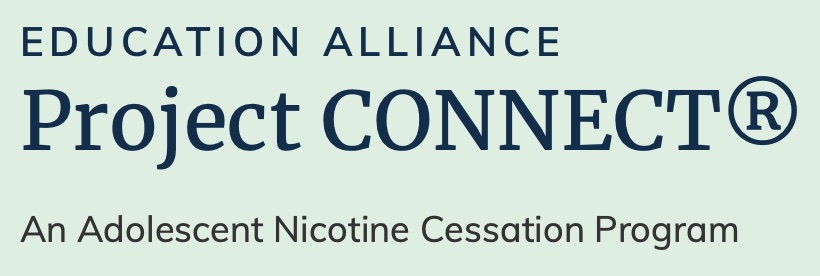
“I don’t know what happened,” Schuster says, excitement building in her voice as she discusses “J’s” third week in Project CONNECT. Somehow, something got through to the high schooler, and Schuster witnessed a transformation taking place. He fully participated. And when the other teens in the room saw his engagement, the whole program changed.
The breakthrough she had been holding out for happened. In the classroom, a hastened musical chairs-like activity took place that involved the students listing on posters reasons why people use nicotine and why people shouldn’t. “J” contributed a pro and a con.
“He was proud of his answer,” Schuster recalls.
Hemmerich and Jenson are looking for their own breakthrough regarding the FDA. They hope that scrutiny of the agency’s counting methods and “permissive” enforcement will lead to improvements in its approach.
“[The FDA is] not doing nothing. They’re doing something.” Jenson says. “I think there’s tons of ways in which the whole system could be better.”
Ideally, he’d like to see the agency inspect every retailer at least once a year. The current penalty structure means that if enough violations accumulate in a short period of time, the penalties will escalate. But if retailers aren’t inspected annually, the violations are too few and far between to amount to deterrence.
Increasing the frequency of checks may be hard, though. Jenson recognizes that the FDA’s budget can’t support inspecting every tobacco retailer every year. “I think what you find in practice is that they do as many [inspections] as they can,” Jenson says.
But Jenson believes the agency can improve its directives to contractors that carry out the compliance checks. Data show that the current checks don’t bring violations down.
“If your goal in the enforcement program is to penalize retailers who routinely violate the law—and there’s plenty of them—then your enforcement program has to be structured in such a way that you’re maximizing the penalties against those retailers,” he says. “If you’re punishing the retailer so that there is enough of an incentive to not violate, then they don’t violate.”
The PHLC study’s recommendations are explicit: “Consistent and strong enforcement of a policy against retailers selling tobacco products is the only youth access intervention that actually impacts youth usage rates.”
An FDA spokesperson said that aside from compliance inspections, other efforts by the agency to reduce the number of youth e-cigarette users include investing in regulatory science to address unanswered questions about electronic nicotine delivery systems (ENDS) and developing guidance and regulations to provide clarity for the tobacco industry.
But the PHLC study’s recommendations are explicit: “Consistent and strong enforcement of a policy against retailers selling tobacco products is the only youth access intervention that actually impacts youth usage rates.”
If the FDA’s retail tobacco inspections were as stringent as Hemmerich and Jenson recommend, would it reduce vaping among young people? The answer isn’t clear.
“You’d really have to understand where people are getting e-cigarettes from in order to really get to that,” Jenson says. “There is no question that if you are removing the sale of the products, even temporarily, and in particular from stores that are known to sell to youth, it’s going to have a positive impact.”
Meanwhile, early intervention programs like Project CONNECT are in demand. This year Caron Treatment Centers added two new states, Alabama and Kentucky, to its programming. The prospect makes Schuster’s “heart so happy” because of the difference she sees the program making on the ground.
Back when Schuster’s Week 3 class at Jonesboro High ended and the students piled out, “J” hung back. The moment is seared in Schuster’s mind—especially when “J” told her, “You know what, Miss Tara, I know you’re here. I know you care. And I know this program can help me, because I do not want to smoke.”
Schuster, teary-eyed, pauses as she recounts the memory.
“It was a beautiful moment,” she says. “I knew he was where he was supposed to be.”
Top, bottom photos: Shutterstock


